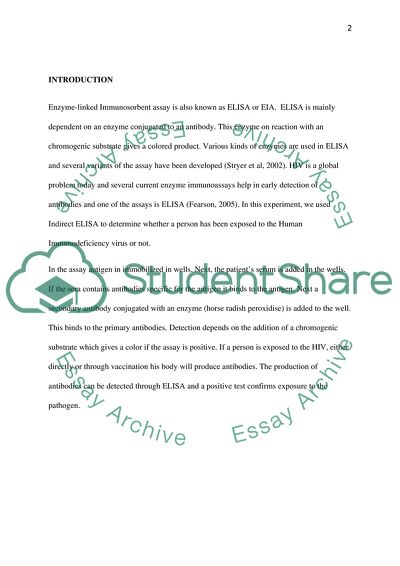ELISA assay Lab Report Example | Topics and Well Written Essays - 1250 words. https://studentshare.org/medical-science/1843865-enzyme-linked-immuno-sorbent-assay
ELISA Assay Lab Report Example | Topics and Well Written Essays - 1250 Words. https://studentshare.org/medical-science/1843865-enzyme-linked-immuno-sorbent-assay.


